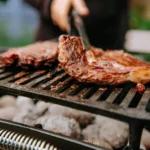Clay bowls have been used for cooking for centuries in cultures worldwide, from traditional Indian earthen pots to Moroccan tagines and Mexican cazuelas. Cooking in clay bowls offers numerous benefits, including enhanced flavor, even heat distribution, and a more natural cooking process.
These bowls are prized for their ability to retain moisture and infuse food with a unique, earthy taste. In this guide, we will explore the advantages of cooking with clay bowls, their various uses, and how to properly care for them to ensure longevity.
Benefits of Cooking with Clay Bowls
One of the most significant benefits of using clay bowls for cooking is their ability to retain and distribute heat evenly. Unlike metal cookware, which heats up quickly and can create hot spots, clay absorbs heat gradually, allowing for slow and even cooking.
This makes clay bowls ideal for simmering stews, soups, and slow-cooked meats, ensuring all flavors blend harmoniously. Another advantage of clay cookware is its ability to retain moisture.
Because clay is porous, it allows steam to circulate within the bowl, preventing food from drying out. This feature is especially beneficial for dishes like braised meats, rice dishes, and curries, where maintaining moisture is crucial for achieving tender and flavorful results.
Cooking with clay is also a healthier alternative to some modern cookware materials. Clay bowls do not contain harmful chemicals or synthetic coatings like Teflon, which can release toxins when overheated.
Additionally, unglazed clay cookware naturally alkalizes food, reducing acidity and enhancing the dish’s overall nutritional value.
Types of Clay Bowls for Cooking
Clay bowls come in different forms, each suited for specific cooking methods. Unglazed clay bowls are preferred for their ability to absorb water and enhance the flavor of dishes.
These bowls must be soaked before cooking to prevent cracking from sudden temperature changes. On the other hand, glazed clay bowls are coated with a protective layer, making them non-porous and easier to clean while still retaining some of the benefits of clay cooking.
Another variation is the flameware clay bowl, which is specially designed to withstand direct heat from stovetops and open flames. These bowls are ideal for searing and high-temperature cooking.
Traditional earthenware, like the Moroccan tagine or Spanish cazuela, is widely used for slow cooking and baking, infusing dishes with a distinct depth of flavor.
How to Use Clay Bowls for Cooking
Before using a clay bowl for cooking, it must be properly seasoned. This process involves soaking the bowl in water for several hours, then coating the interior with oil and slowly heating it. Seasoning helps prevent cracking and enhances the bowl’s durability over time.
When cooking with a clay bowl, it’s important to use low to medium heat. Rapid temperature changes can cause the bowl to crack, so avoid placing a cold clay bowl directly on a hot surface or vice versa. Instead, start with low heat and gradually increase it as needed.
Clay bowls are versatile and can be used for various cooking techniques, including baking, steaming, and slow cooking. They are ideal for dishes such as baked bread, roasted vegetables, and one-pot meals, where gentle, consistent heat is beneficial.
Caring for Your Clay Cooking Bowls
Proper care is essential for maintaining clay cookware. Since clay is porous, it should never be cleaned with harsh detergents, as it can absorb chemicals and affect the flavor of future dishes.
Instead, clean the bowl with warm water and a soft brush, using a mild baking soda solution if necessary to remove stubborn stains.
To store a clay bowl, ensure it is completely dry before putting it away to prevent mold growth. It’s best to store it in a well-ventilated area, avoiding airtight containers that can trap moisture.
Over time, a well-seasoned clay bowl will develop a patina, improving its non-stick properties and enhancing its performance. If a crack appears, minor repairs can be made using natural adhesives or food-safe sealants, though severely damaged bowls should be replaced.
Conclusion
Cooking with clay bowls is an ancient practice that continues to offer modern benefits. Whether used for baking, slow cooking, or steaming, these natural cookware pieces provide superior heat retention, moisture preservation, and enhanced flavor.
By properly seasoning, using, and caring for your clay bowls, you can enjoy their benefits for years to come. If you’re looking for a healthier, more flavorful way to prepare meals, incorporating clay cookware into your kitchen routine is an excellent choice.















